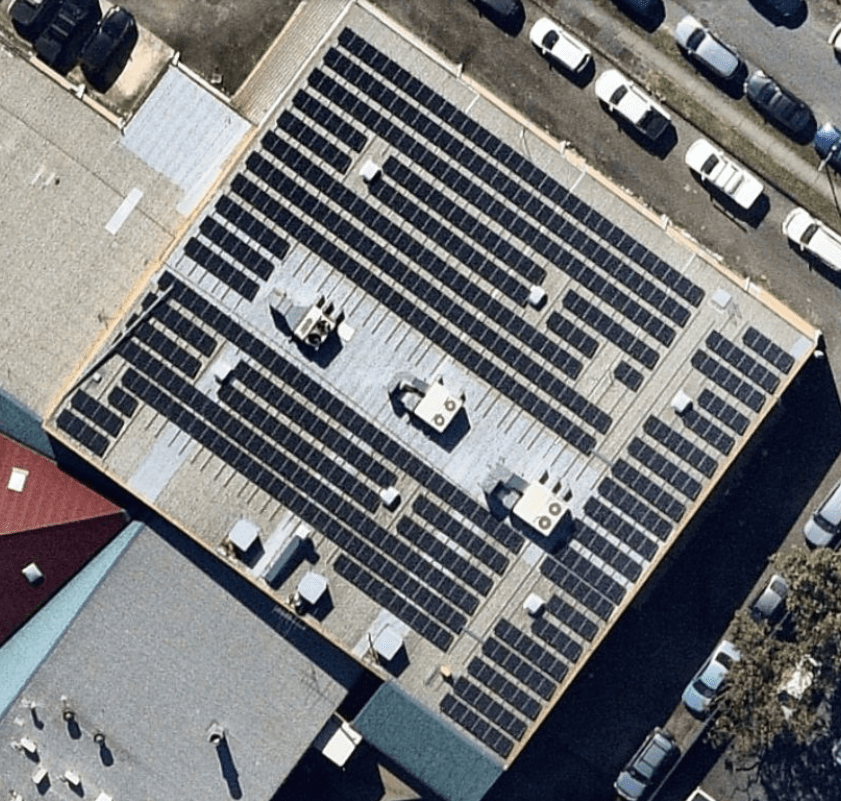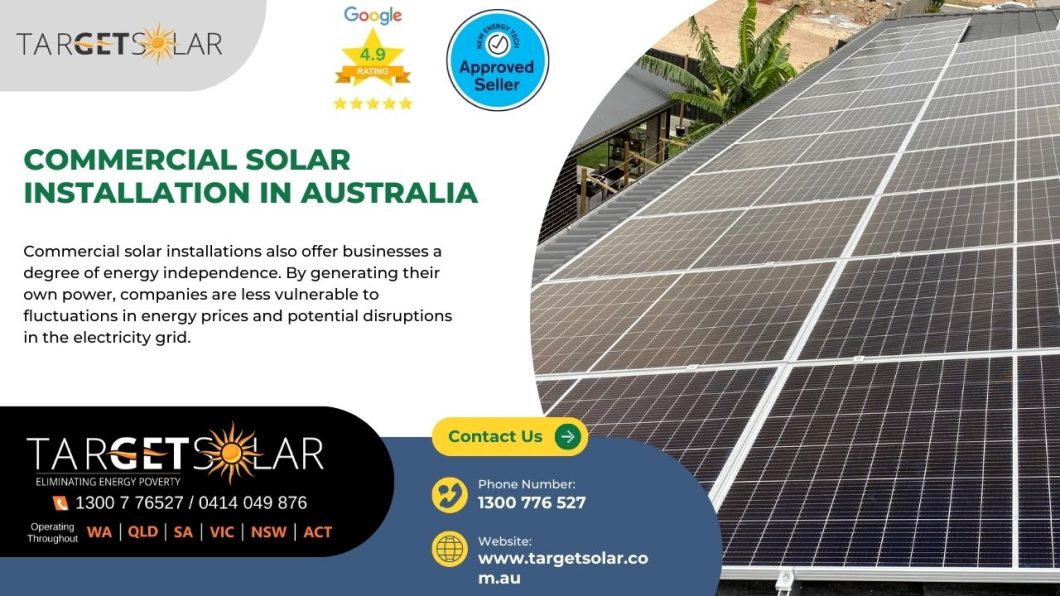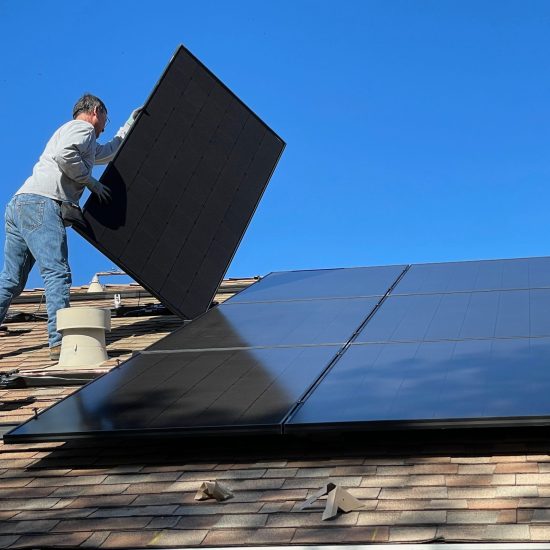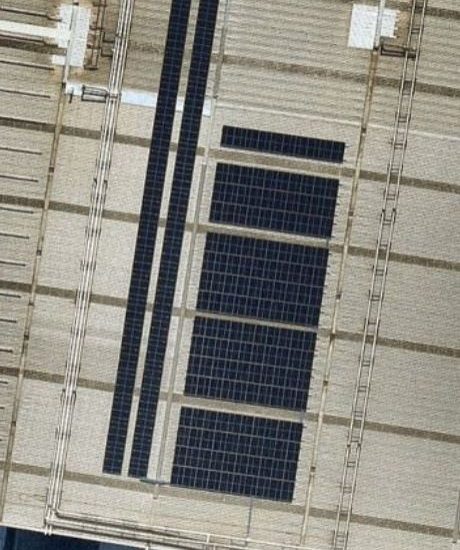Brief Overview of the Growing Adoption of Solar Energy in Australia
Australia is experiencing a significant shift towards renewable energy, with solar power at the forefront of this transformation. As of 2024, Australia boasts one of the highest rates of solar energy adoption in the world, with over 3 million rooftop solar systems installed nationwide. This trend is driven by decreasing costs of solar technology, generous government incentives, and an increasing awareness of environmental sustainability. Solar energy’s popularity is not limited to residential applications; commercial entities are also increasingly investing in solar installations to reduce operational costs and contribute to environmental conservation (Welcome to the Solar Homes Program) .
Importance of Solar Energy for Commercial Entities
For commercial entities, the transition to solar energy is more than just an environmental statement; it is a strategic business decision. Rising electricity costs pose a significant challenge for businesses, impacting their profitability and operational efficiency. By adopting solar energy, businesses can mitigate these costs, achieving substantial savings on their energy bills. Furthermore, solar installations enhance a company’s reputation by demonstrating a commitment to sustainable practices, which can attract environmentally conscious consumers and investors.
Commercial solar installations also offer businesses a degree of energy independence. By generating their own power, companies are less vulnerable to fluctuations in energy prices and potential disruptions in the electricity grid. This stability is particularly crucial for industries that rely heavily on consistent energy supply for their operations (Welcome to the Solar Homes Program) .
Introduction to the Benefits and Considerations of Commercial Solar Installations
Benefits of Commercial Solar Installations:
- Cost Savings: Commercial solar systems can significantly reduce electricity expenses, providing a strong return on investment. Over time, the savings on energy bills can outweigh the initial installation costs, making solar a financially sound decision.
- Environmental Impact: Solar energy is a clean, renewable resource that helps reduce greenhouse gas emissions. By installing solar panels, businesses contribute to the fight against climate change and support national and global sustainability goals.
- Energy Independence: With solar energy, businesses can produce their own power, reducing reliance on the grid and protecting against energy price volatility.
- Increased Property Value: Properties with solar installations often see an increase in value due to the long-term energy savings and sustainability benefits they offer.
Considerations for Commercial Solar Installations:
- Initial Investment: While solar technology has become more affordable, the initial investment for a commercial solar installation can still be substantial. Businesses need to consider financing options, including loans, leases, and power purchase agreements (PPAs).
- Space Requirements: The amount of available space on rooftops or land for solar panels will determine the size of the system that can be installed. Larger systems require more space but can generate more power.
- Regulatory Compliance: Navigating the regulatory landscape, including permits and incentives, can be complex. Businesses must ensure they comply with local regulations and take full advantage of available incentives.
- Maintenance and Monitoring: Although solar systems require minimal maintenance, regular monitoring and occasional servicing are necessary to ensure optimal performance and longevity.
By carefully weighing these benefits and considerations, businesses can make informed decisions about investing in commercial solar installations. The shift to solar energy not only provides financial and environmental advantages but also positions companies as leaders in sustainability and innovation (Welcome to the Solar Homes Program) .

The Need for Commercial Solar Installation
Rising Energy Costs and Their Impact on Businesses
Energy costs have been steadily increasing over the years, placing a significant financial burden on businesses. The Australian Energy Regulator reported that electricity prices have been volatile, with a notable upward trend driven by factors such as increasing fuel costs, aging infrastructure, and market dynamics (Welcome to the Solar Homes Program) . For many businesses, energy expenses constitute a substantial portion of their operating costs, directly impacting their profitability.
Commercial solar installations offer a practical solution to mitigate these rising energy costs. By generating their own electricity, businesses can significantly reduce their dependence on the grid, leading to lower electricity bills. The initial investment in solar technology is offset by the long-term savings achieved through reduced energy expenses. Additionally, with the advent of battery storage systems, businesses can store excess solar energy generated during the day for use during peak hours or at night, further enhancing cost savings.
Environmental Benefits and Corporate Social Responsibility
Adopting solar energy is not only a financially savvy decision but also a commitment to environmental stewardship. Solar power is a clean, renewable source of energy that produces no greenhouse gas emissions during operation. By installing solar panels, businesses can significantly reduce their carbon footprint and contribute to global efforts to combat climate change.
Corporate social responsibility (CSR) has become a key focus for many companies, with stakeholders increasingly demanding sustainable and ethical business practices. Embracing solar energy aligns with CSR goals by demonstrating a company’s commitment to sustainability and environmental protection. This can enhance the company’s reputation, attract environmentally conscious consumers and investors, and provide a competitive edge in the marketplace (Welcome to the Solar Homes Program).
Moreover, businesses that adopt solar energy can also influence their supply chains and industry peers, encouraging broader adoption of sustainable practices. This collective effort can lead to substantial environmental benefits, including reduced reliance on fossil fuels and decreased air pollution.

Complete commercial solar project on time with proper project management
Government Policies and Incentives Encouraging Solar Adoption
The Australian government, along with state governments, has implemented a range of policies and incentives to promote the adoption of solar energy. These measures aim to reduce the financial barriers to installing solar systems and accelerate the transition to renewable energy sources.
Federal Incentives:
- Small-scale Renewable Energy Scheme (SRES): Provides financial incentives for the installation of small-scale renewable energy systems, including commercial solar. Businesses can receive Small-scale Technology Certificates (STCs) for their installations, which can be sold to offset the cost of the system (Welcome to the Solar Homes Program) .
State Incentives:
- Victorian Solar Rebate: The Victorian government offers significant rebates for solar installations through the Solar Homes Program, which includes rebates for both residential and commercial properties. This program helps reduce the upfront cost of solar systems, making it more accessible for businesses (Welcome to the Solar Homes Program) .
- Other State Programs: Various states have their own incentive programs to encourage solar adoption. For example, New South Wales offers rebates and interest-free loans for solar and battery systems under its Empowering Homes program .
Feed-in Tariffs:
- Many states offer feed-in tariffs that allow businesses to earn credits or payments for the excess electricity they generate and export to the grid. This provides an additional revenue stream and further enhances the financial viability of solar installations (Welcome to the Solar Homes Program) .
By leveraging these government policies and incentives, businesses can significantly reduce the cost of installing solar systems, making the switch to renewable energy more attractive and financially feasible.
Writer’s Note
The rising costs of energy, coupled with the environmental benefits and corporate social responsibility considerations, make commercial solar installations a compelling choice for businesses in Australia. Government policies and incentives further enhance the financial appeal of adopting solar energy. As businesses look to reduce operational costs, improve their sustainability credentials, and protect themselves from volatile energy markets, commercial solar installations present a strategic and forward-thinking solution.
For businesses ready to make the switch to solar, consulting with an experienced provider like Target Solar can help navigate the process, from assessing energy needs to installation and maintenance, ensuring a smooth transition to renewable energy.
Benefits of Commercial Solar Installation
Cost Savings
Reduction in Electricity Bills
One of the most immediate and tangible benefits of installing a commercial solar system is the significant reduction in electricity bills. By generating their own power, businesses can substantially decrease their dependence on the grid, leading to lower monthly energy expenses. Here’s how solar power can help cut electricity costs:
- Self-Generation of Power: Solar panels generate electricity directly from sunlight, which can be used to power various operations during daylight hours. This reduces the amount of electricity businesses need to purchase from utility companies.
- Net Metering and Feed-in Tariffs: In many areas, businesses can benefit from net metering or feed-in tariffs. Net metering allows businesses to earn credits for any excess electricity they produce and send back to the grid. These credits can offset future electricity bills, further reducing overall energy costs. Feed-in tariffs provide payments for the surplus energy generated, creating an additional revenue stream (Welcome to the Solar Homes Program) .
- Energy Independence: By generating their own electricity, businesses are less vulnerable to fluctuations in energy prices. This energy independence helps in stabilizing energy costs and shielding the business from unexpected spikes in electricity rates.
Long-term Financial Benefits and Return on Investment (ROI)
Investing in a commercial solar system offers substantial long-term financial benefits and a strong return on investment (ROI). Here’s an overview of how businesses can benefit financially over time:
- Decreased Operational Costs: Once the solar system is installed, the operational costs are minimal. Solar panels require very little maintenance, and there are no fuel costs associated with solar energy. This means that the ongoing costs are much lower compared to traditional energy sources .
- ROI and Payback Period: The initial investment in a solar system can be recouped over time through savings on electricity bills. The typical payback period for commercial solar installations ranges from 3 to 7 years, depending on the size of the system, energy consumption, and local energy rates. After this period, businesses can enjoy free electricity for the remainder of the system’s lifespan, which is usually around 25 to 30 years .
- Increased Property Value: Properties equipped with solar power systems often see an increase in value. This is because future buyers recognize the long-term cost savings associated with solar energy. A higher property value can enhance the ROI if the property is sold.
- Government Incentives and Rebates: Various government programs offer incentives and rebates that can significantly reduce the upfront cost of installing a solar system. For example, the Small-scale Renewable Energy Scheme (SRES) provides financial incentives for businesses that install renewable energy systems. These incentives can improve the ROI and shorten the payback period .
- Tax Benefits: Businesses can take advantage of tax incentives such as accelerated depreciation under the Modified Accelerated Cost Recovery System (MACRS) in the U.S. or similar schemes in Australia. These tax benefits allow businesses to recover the costs of solar installations more quickly through tax deductions, further enhancing the financial viability of the investment .
In summary, commercial solar installations offer significant cost savings through reduced electricity bills and generate substantial long-term financial benefits. With decreasing operational costs, an attractive ROI, increased property value, and various government incentives, investing in solar energy is a financially sound decision for businesses aiming to reduce expenses and enhance sustainability.
Types of Commercial Solar Systems
Rooftop Solar Systems
Overview: Rooftop solar systems are the most common type of commercial solar installation. They involve mounting solar panels on the roofs of commercial buildings. These systems are ideal for businesses with ample roof space and unobstructed sunlight.
Benefits:
- Efficient Use of Space: Utilizes unused roof space, making it a cost-effective solution for businesses without extra land.
- Energy Savings: Directly reduces electricity bills by generating power on-site.
- Minimal Disruption: Installation can be done with minimal disruption to daily business operations.
Considerations:
- Structural Integrity: The roof must be able to support the weight of the solar panels and associated equipment.
- Shading: Any shading from nearby structures or vegetation can impact the system’s efficiency.
Suitability:
- Best suited for urban environments and businesses with large, flat rooftops, such as warehouses, factories, and office buildings.
Ground-Mounted Solar Systems
Overview: Ground-mounted solar systems are installed on the ground rather than on rooftops. These systems are ideal for businesses with large open spaces that are not being used for other purposes.
Benefits:
- Flexibility: Can be installed in optimal locations with the best sunlight exposure.
- Scalability: Easier to scale up by adding more panels as needed.
- Maintenance: Generally easier to access for maintenance and cleaning compared to rooftop systems.
Considerations:
- Land Use: Requires significant land area, which might not be available in urban settings.
- Initial Costs: Typically, more expensive to install than rooftop systems due to additional mounting structures and potential site preparation.
Suitability:
- Ideal for rural or suburban areas with ample open land, such as farms, industrial parks, and large commercial properties with unused land.
Solar Carports
Overview: Solar carports involve installing solar panels on canopy structures built over parking areas. This type of system not only generates electricity but also provides shaded parking for vehicles.
Benefits:
- Dual Purpose: Combines energy generation with the practical benefit of shaded parking, which can be attractive to employees and customers.
- Optimized Space Use: Makes use of existing parking lots, which are often large and sun-exposed areas.
- Visibility: Highly visible installation can enhance the business’s green credentials.
Considerations:
- Higher Initial Cost: Typically more expensive due to the need to build supporting structures for the panels.
- Design and Planning: Requires careful design to ensure structural integrity and optimal performance.
Suitability:
- Best suited for businesses with large parking areas, such as shopping centers, corporate campuses, and universities.
Comparison and Suitability for Different Business Types
- Rooftop Solar Systems:
- Best For: Urban businesses with limited ground space, such as office buildings, retail stores, and warehouses.
- Key Advantage: Efficient use of existing roof space without additional land requirements.
- Ground-Mounted Solar Systems:
- Best For: Businesses with large, unused land areas, such as farms, industrial facilities, and rural businesses.
- Key Advantage: Flexibility in placement and scalability.
- Solar Carports:
- Best For: Businesses with extensive parking facilities, such as shopping malls, corporate offices, and educational institutions.
- Key Advantage: Provides dual benefits of energy generation and shaded parking.
Each type of commercial solar system has unique advantages and considerations. The choice of system depends on factors such as available space, budget, and specific business needs. Consulting with a solar energy expert can help businesses determine the best system type to maximize their energy savings and meet their sustainability goals (Welcome to the Solar Homes Program).
Key Considerations for Installing Commercial Solar
Site Assessment
Evaluating Roof or Ground Space
The first step in installing a commercial solar system is to evaluate the available space. For rooftop installations, this involves measuring the roof area to determine how many solar panels can be accommodated. Key factors to consider include:
- Roof Size and Shape: The size and configuration of the roof will dictate the potential solar array layout.
- Orientation and Tilt: Optimal solar panel performance typically requires a south-facing orientation and a tilt angle that maximizes sun exposure.
- Shading: Analyzing potential shading from nearby buildings, trees, or other obstructions is crucial as shading can significantly reduce solar panel efficiency.
For ground-mounted systems, businesses need to assess the available land:
- Land Area: Sufficient space must be available to install the desired number of solar panels.
- Topography: The land should ideally be flat or with a gentle slope to facilitate installation and maximize solar exposure.
- Accessibility: The site should be accessible for installation equipment and ongoing maintenance.
Structural Integrity and Shading Analysis
For rooftop installations, ensuring the structural integrity of the roof is essential:
- Load-Bearing Capacity: The roof must be capable of supporting the weight of the solar panels, mounting hardware, and any additional equipment.
- Roof Condition: The roof should be in good condition to avoid the need for repairs or replacements shortly after installation.
A thorough shading analysis is also necessary:
- Sun Path Analysis: Using tools and software to track the sun’s path and identify potential shading throughout the day and across different seasons.
- Mitigation Strategies: Considering options such as tree trimming, removing obstructions, or using microinverters or power optimizers to minimize shading impact.
System Sizing
Assessing Energy Consumption Patterns
Understanding a business’s energy consumption is crucial for determining the appropriate system size:
- Energy Usage Data: Analyzing historical energy bills and usage patterns to determine average and peak energy consumption.
- Future Needs: Considering any expected changes in energy usage, such as business expansion or the addition of new equipment.
Determining the Optimal System Size for Maximum Efficiency
Based on the energy consumption assessment, the optimal system size can be determined:
- Solar Potential: Calculating the potential energy generation based on the site’s solar exposure.
- System Capacity: Matching the solar system capacity to the business’s energy needs to ensure maximum efficiency and cost savings.
- Scalability: Designing the system with potential for future expansion if energy needs increase.
Budget and Financing
Initial Investment and Financing Options
The initial investment for a commercial solar system can be substantial, but various financing options are available:
- Capital Purchase: Paying for the system upfront to maximize long-term savings.
- Leasing: Entering into a lease agreement where a third party owns and maintains the system, and the business pays a fixed monthly fee.
- Power Purchase Agreements (PPAs): Under a PPA, a third party installs and owns the system, and the business agrees to purchase the generated electricity at a predetermined rate.
Available Government Rebates and Incentives
Government rebates and incentives can significantly reduce the cost of commercial solar installations:
- Small-scale Renewable Energy Scheme (SRES): Provides financial incentives through Small-scale Technology Certificates (STCs) which can be sold to reduce upfront costs.
- State Rebates: Programs like the Victorian Solar Rebate offer substantial rebates for commercial solar installations.
- Tax Incentives: Businesses can benefit from tax deductions and credits, such as accelerated depreciation schemes, which reduce the overall investment cost.
Regulatory Compliance
Understanding Local Regulations and Permits
Navigating the regulatory landscape is crucial for a successful solar installation:
- Permits: Obtaining the necessary permits from local authorities for the installation.
- Zoning Laws: Ensuring compliance with local zoning laws and regulations that may affect the installation.
Ensuring Compliance with Industry Standards
Compliance with industry standards ensures the safety and efficiency of the solar system:
- Building Codes: Adhering to national and local building codes and standards.
- Electrical Standards: Ensuring the system meets all electrical safety standards and requirements.
- Quality Certifications: Using certified equipment and installers to ensure the highest quality and performance standards.
By carefully considering these key factors, businesses can ensure a successful commercial solar installation that maximizes energy savings, minimizes costs, and complies with all relevant regulations and standards. Consulting with experienced solar providers, like Target Solar, can help navigate these considerations and optimize the solar investment.
The Installation Process
Initial Consultation and Feasibility Study
Site Visit and Energy Assessment
The installation process begins with an initial consultation to understand the business’s energy needs and evaluate the potential for a solar installation. This phase typically involves:
- Site Visit: Solar experts visit the business premises to assess the physical site conditions. They inspect the available roof or ground space, evaluate structural integrity, and identify any potential shading issues.
- Energy Assessment: A thorough analysis of the business’s energy usage patterns is conducted. This includes reviewing past electricity bills, understanding peak demand times, and projecting future energy needs based on business growth.
Proposal and Cost Estimation
Based on the site visit and energy assessment, a detailed proposal is developed:
- Proposal Development: The proposal outlines the recommended solar system size, configuration, and components tailored to the business’s specific needs.
- Cost Estimation: A comprehensive cost estimate is provided, including the initial installation cost, potential savings on electricity bills, and available rebates and incentives. The proposal also includes the estimated return on investment (ROI) and payback period.
Design and Engineering
Custom System Design Based on Site Specifics
The design phase involves creating a customized solar solution that maximizes efficiency and meets the business’s energy requirements:
- System Layout: Engineers design the optimal layout for the solar panels, considering factors such as roof orientation, tilt angle, and shading to ensure maximum sunlight capture.
- Electrical Design: The electrical components, including inverters and wiring, are designed to integrate seamlessly with the existing electrical infrastructure.
Selection of High-Quality Components
High-quality components are selected to ensure the durability and performance of the solar system:
- Solar Panels: Choosing the best solar panels based on efficiency, warranty, and performance in local conditions.
- Inverters: Selecting reliable inverters that convert the solar energy into usable electricity for the business.
- Mounting Systems: Ensuring that the mounting systems are robust and suited to the site’s conditions, whether it’s a rooftop or ground-mounted system.
Installation
Step-by-Step Installation Process
The actual installation of the solar system involves several key steps:
- Site Preparation: Preparing the site, which may include reinforcing the roof or clearing ground space.
- Mounting Structure Installation: Installing the mounting structures to secure the solar panels.
- Panel Installation: Mounting the solar panels onto the structures and ensuring they are securely fixed.
- Electrical Work: Connecting the solar panels to the inverter and the existing electrical system.
Timeline and Potential Disruptions
The installation timeline can vary depending on the size and complexity of the system, but typically includes:
- Planning and Permitting: Obtaining necessary permits and approvals, which can take a few weeks.
- Installation: The physical installation process, which usually takes one to two weeks for most commercial systems.
- Potential Disruptions: Minimal disruptions to business operations, as most of the work is done outside and can be scheduled to avoid peak business hours.
Commissioning and Monitoring
System Testing and Commissioning
Once the installation is complete, the system is thoroughly tested to ensure it operates correctly:
- Testing: Checking all electrical connections, verifying the performance of each solar panel, and ensuring the inverter is functioning properly.
- Commissioning: Officially commissioning the system, which involves a final inspection and approval from relevant authorities to ensure it meets all regulatory standards.
Setting Up Monitoring Systems for Performance Tracking
To ensure ongoing performance and efficiency, monitoring systems are set up:
- Performance Monitoring: Installing monitoring equipment that tracks the solar system’s output in real-time.
- Data Analysis: Providing tools and software for businesses to monitor energy production, consumption, and savings. This helps in identifying any issues early and ensuring the system operates at peak efficiency.
Engineer Note After Solar Installation
By following a detailed and structured installation process, businesses can ensure a smooth transition to solar energy, maximizing both their financial and environmental benefits. For expert guidance and a seamless installation experience, businesses can rely on trusted solar providers like Target Solar, who offer comprehensive support from the initial consultation through to ongoing monitoring and maintenance.
Challenges and Solutions
Common Challenges Faced During Commercial Solar Installations
- Regulatory and Permitting Delays:
- Navigating the regulatory landscape can be complex and time-consuming. Obtaining necessary permits and ensuring compliance with local regulations can lead to delays.
- Site-Specific Issues:
- Structural issues such as roof integrity, shading, and limited space can impact the feasibility and efficiency of the installation.
- Financial Constraints:
- High upfront costs and securing financing can be significant barriers for many businesses.
- Technical Challenges:
- Integrating the solar system with existing electrical infrastructure and ensuring compatibility with current energy management systems.
- Maintenance and Performance Monitoring:
- Ensuring the long-term performance of the solar system requires regular maintenance and effective monitoring, which can be challenging to implement and manage.
Solutions and Best Practices to Overcome These Challenges
- Streamlined Permitting Processes:
- Working with experienced solar providers who are familiar with local regulations can help streamline the permitting process. They can manage paperwork and liaise with authorities to expedite approvals.
- Comprehensive Site Assessments:
- Conducting thorough site assessments during the initial consultation phase helps identify and address structural issues early. Solutions such as roof reinforcements or choosing ground-mounted systems can mitigate these challenges.
- Flexible Financing Options:
- Exploring various financing options, including power purchase agreements (PPAs), leases, and government incentives, can alleviate financial constraints. These options reduce the need for high upfront investments and make solar installations more accessible.
- Advanced System Design and Integration:
- Utilizing advanced design tools and technologies ensures that the solar system is optimally integrated with the existing infrastructure. Working with experienced engineers can help avoid technical pitfalls and ensure seamless integration.
- Robust Maintenance and Monitoring Plans:
- Implementing a comprehensive maintenance schedule and leveraging advanced monitoring systems ensures the solar system operates at peak efficiency. Regular inspections and proactive maintenance can prevent issues before they affect performance.
Tips for Ensuring a Smooth Installation Process
- Early Planning and Consultation:
- Engage with a reputable solar provider early in the process to benefit from their expertise in planning, design, and execution.
- Clear Communication:
- Maintain open and clear communication with all stakeholders, including solar providers, regulatory authorities, and internal teams, to ensure everyone is aligned and informed.
- Detailed Project Management:
- Utilize detailed project management practices to track progress, manage timelines, and address issues promptly as they arise.
- Leveraging Technology:
- Use technology for design simulations, performance monitoring, and maintenance scheduling to enhance efficiency and reliability.
The Future of Commercial Solar in Australia
Trends and Predictions for Commercial Solar Adoption
- Increased Adoption Rates:
- As technology advances and costs continue to decrease, more businesses are expected to adopt solar energy solutions. Government policies and corporate sustainability goals will drive this trend.
- Integration with Energy Storage:
- The combination of solar panels with energy storage systems (batteries) will become more prevalent, allowing businesses to store excess energy and use it during peak demand times.
- Smart Grid Integration:
- The development of smart grids will enable better integration of solar energy, improving grid stability and efficiency while facilitating greater adoption.
Technological Advancements in Solar Energy
- Higher Efficiency Panels:
- Ongoing research and development are leading to the creation of more efficient solar panels, which can generate more power in the same amount of space.
- Advanced Inverters and Monitoring Systems:
- Innovations in inverter technology and monitoring systems are improving the efficiency, reliability, and ease of managing solar installations.
- Solar Photovoltaic (PV) Innovation:
- Emerging technologies such as bifacial solar panels, which capture sunlight from both sides, and transparent solar panels are expanding the possibilities for solar energy applications.
The Role of Solar Energy in Australia’s Future Energy Landscape
- Contribution to National Energy Goals:
- Solar energy will play a crucial role in Australia’s transition to a sustainable energy future, helping to meet national renewable energy targets and reduce carbon emissions.
- Economic and Environmental Benefits:
- Increased adoption of solar energy will drive economic growth through job creation in the renewable energy sector and reduce environmental impact by lowering reliance on fossil fuels.
- Resilience and Energy Security:
- Solar energy, combined with energy storage, can enhance energy security and resilience, reducing the vulnerability to energy price fluctuations and supply disruptions.
Conclusion
The adoption of commercial solar installations offers numerous benefits, including significant cost savings, enhanced sustainability, and energy independence. Despite potential challenges, businesses can overcome these with proper planning, advanced technology, and expert guidance.
Encouragement for Businesses to Consider Solar Energy
Businesses are encouraged to explore solar energy solutions as a viable means to reduce operational costs, meet sustainability goals, and contribute to a greener future. The long-term benefits far outweigh the initial challenges, making solar energy a smart investment.
Contact Target Solar for Free Expert Consultation and Services
For expert guidance and tailored solar solutions, contact Target Solar. With over 12 years of experience, we provide dedicated services to help businesses transition to solar energy seamlessly and efficiently. Reach out to us today to start your solar journey and contribute to a sustainable future.




